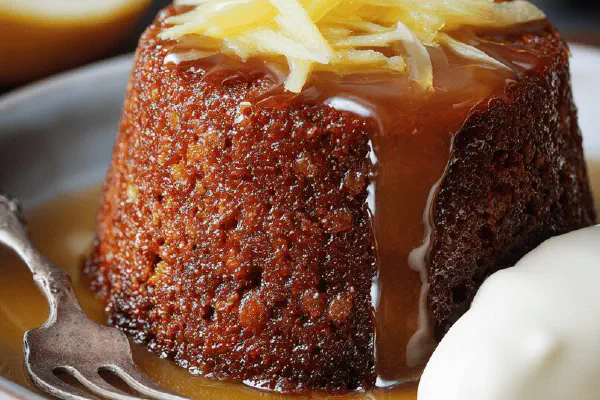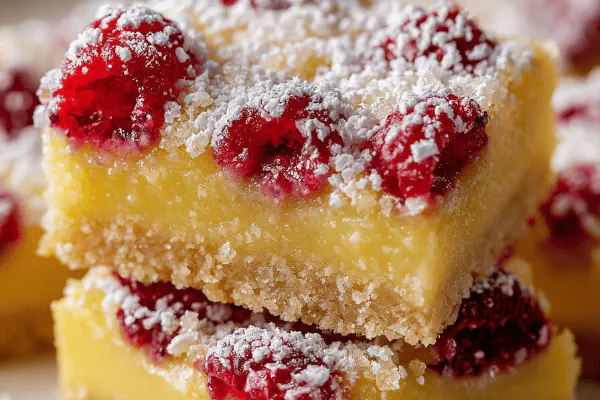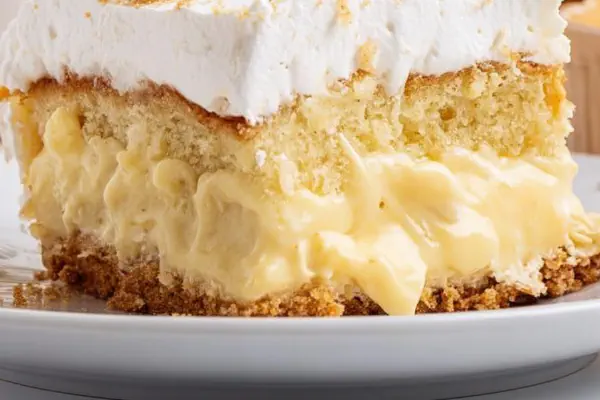Spiced Marmalade Ginger Pudding

E
By Emma
Certified Culinary Professional
•
Recipe tested & approved
Light ginger-infused steamed puddings with a marmalade glaze reduced with fresh ginger and lemon zest. Adjusted flour and sugar ratios for a soberer sweetness, swapped butter for coconut oil to bring a tropical warmth, replaced milk with almond milk for creaminess without dairy, and added cinnamon to deepen spice layers. Cooking times slightly extended for steady steaming. Best watched not by clock but by jiggle and toothpick test. Serve warm. A sticky, gingery syrup to pour on is non-negotiable.
Prep:
30 min
Cook:
55 min
Total:
Servings:
6 servings
#steamed pudding
#ginger dessert
#marmalade recipes
#coconut oil baking
#dairy-free pudding
Pulled from my dusty corner of tried breads and puddings is this ginger-marmalade combo, steamed not baked, subtle but bold. Coconut oil’s mysterious but reliable when butter’s off limits, almond milk adds a whisper of sweetness that milk misses. I learned from blistered pudding pasts to watch the jiggle and feel the texture; time is a rough guide. Marmalade’s bright, sharp bite with fresh ginger and lemon zest wakes up the syrup, balancing mellow sweetness. Steamy, cozy, a pinch odd compared to the usual. Baking wrapped in foil to guard moisture is key—no crusty skin here. This is the sort of pudding you want with black tea or cider, rainy afternoons.
Ingredients
- 105 g all-purpose flour, sifted
- 6 ml baking powder
- 8 ml ground ginger
- 5 ml ground cinnamon
- 75 g coconut oil, softened
- 60 g raw cane sugar
- 2 medium eggs
- 60 ml almond milk
- 250 ml water
- 150 ml tangy orange marmalade
- 10 ml freshly grated ginger
- 5 ml lemon zest finely grated
About the ingredients
Flour is the backbone. I cut it down 30% from the original to keep the pudding soft and spongy, not dense. Baking powder for lift, ginger powder plus cinnamon layers the spice; don’t skip cinnamon, trust me. Coconut oil swaps in for butter, rendering a rich but subtler flavor, plus it stands heat better under steaming. Almond milk replaces cow’s milk—keeps that smooth, delicate texture but lighter. Marmalade’s quality changes everything; use one with robust citrus punch, preferably slightly bitter orange or even grapefruit marmalade for bite. Fresh ginger provides a snap that powdered can’t, and lemon zest brightens the sauce so it doesn’t weigh down. Water needs to be just boiling going into the bath, helps immediate steaming. You can sub maple syrup for sugar, but adjust wetness. Butter or soy milk swap back for non-dairy flexibility.
Method
- Heat oven to 175 C, middle rack. Butter six small oven-safe ramekins—or oil with coconut oil; gets less sticky.
- Sift flour, baking powder, ground ginger, and cinnamon into a bowl. Fresh spices matter; stale means flat.
- Whisk softened coconut oil and sugar until creamy but don’t overbeat (coconut oil works differently than butter). Add eggs, one at a time, mixing in well after each.
- Fold in dry ingredients alternated with almond milk. Paste should be thick but moist enough to drop from spoon, no dry clumps.
- Pour batter into ramekins, filling about 3/4 full (batter puffs up). Cover each tightly with foil—prevents skin forming.
- Place ramekins in a deep roasting pan. Pour boiling water into pan until it covers half the ramekins' height. No splash into batter, please.
- Bake 50 to 60 min. Start checking around 50 with a toothpick; should come out with a few moist crumbs, not wet batter. Puddings jiggle gently, but solidify as cooled.
- While they steam, combine water, marmalade, grated ginger, and lemon zest in a saucepan. Bring to a gentle boil, lower heat, simmer until reduced by roughly one third, thick and glossy.
- Remove puddings from water bath carefully, foil off. Invert each onto a plate while still warm (warm puddings unmold easier).
- Serve hot, drizzling with the sizzling marmalade syrup. The syrup is sharp citrus-spice heat—a must, or it feels dull.
- Leftovers? Pudding reheats evenly in the microwave under foil or reheated steaming for 3–4 minutes.
Cooking tips
Preheat fully, rack mid-height to ensure steady heat distribution. Buttering ramekins solidly avoids sticking—as coconut oil solidifies when cool, you can grease while warm for a smooth coat. Foil wrap traps steam; don’t skip or pudding skins start forming. Water bath should have hot water, to avoid temperature shock—but watch for water level, topping ramekins partially to avoid soggy batter. Test doneness by gently nudging ramekins; puddings should wobble but not slosh or be raw. Toothpick test works but moisture cling is normal—aim for cooked curd texture, not dryness. The marmalade-ginjer sauce thickens as it cools; don’t over-reduce or it becomes hard sugar. Serve sauce bubbling hot for best aroma hit. Unmolding hot is less stressful; cold pudding clings tight. Leftover pudding reheats well but fresh is best. Avoid overbeating batter, especially with coconut oil; it breaks down structure. Watch pudding’s visual clues more than clocks; times vary with oven and ramekin size.
Chef's notes
- 💡 Butter or coconut oil ramekins warm; coconut oil solidifies quick when cool making coating uneven or sticky. Brush steady coat before batter or puddings get trapped.
- 💡 Use fresh grated ginger for marmalade glaze; powder lacks zing and aroma. Simmer glaze low and watch thickness. Over-reduce and syrup caramelizes too hard, loses flow.
- 💡 Water bath crucial for gentle steady steam. Pour boiling water slowly around ramekins to avoid splash on batter; splash means uneven cooking or soggy tops. Mid-rack heat circulation matters.
- 💡 Test puddings by gentle jiggle, not strict timer. Too dry means crumbly dry, underdone pudding sloshes liquid. Toothpick with moist crumbs, never wet batter. Texture should feel custardy mid-set.
- 💡 Fold dry and wet alternately to keep batter light but sticky. Overmixing coconut oil batter breaks structure—puddings dense and tough. Final mix should drop easily but no lumps.
Common questions
Can coconut oil be swapped?
Butter works but softer flavor and less tropical note. Soy milk swap depends on fat content. Adjust liquid ratios slightly; coconut oil burns steadier in steam.
How to know marmalade glaze is right?
Thick but pourable. Bubble very gently. Should coat back of spoon glossily. If syrup hardens fast, reduce simmer time or add splash water back.
Puddings cracked top, why?
Foil wrap missed or water bath temp uneven. Skin forms if steam escapes. Tight foil seals create moist pockets; skip foil, pudding dries or cracks.
Best storage method?
Covered fridge up to 3 days. Microwave under foil for 1-2 minutes or re-steam 3-4 mins. Cold pudding sticks unmold; warm puddings slide easier when plating.



